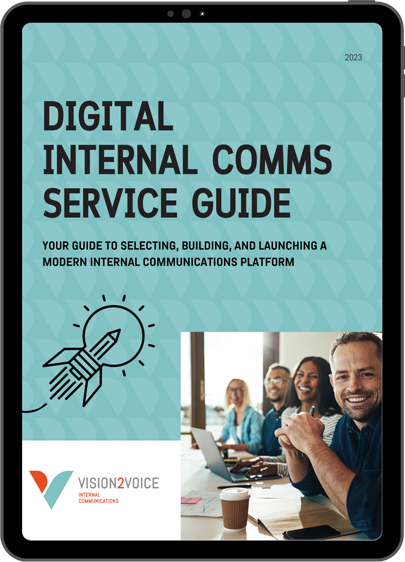
Return-to-Office Mandates: Risk, Reality, and a Better Way Forward
** This article is NOT about whether remote, hybrid, or in-person work is good or bad. It’s about strategies for communicating return-to-office mandates in a way that builds employee engagement.**
During the pandemic, we helped many organizations with change-informed communication strategies as they transitioned to remote and hybrid work. The foundation for these client engagements was deep study and thinking about culture, productivity, connection, and the many realities (good and bad) of the changing nature of the world of work.
Today, many organizations are reversing course. They are returning to pre-pandemic structures and notions of where work should be performed. The reason is that leaders believe this will address many of the workplace challenges today. So, we’ve returned to the research and thinking, and our proven change strategies to provide leaders and the internal communications professionals who support them with the ultimate guide to return-to-office communication and mandates.
The problem with mandates
Let’s start by looking at the definition of the word mandate. Merriam-Webster defines it as:
“An authoritative command. A formal order from an official to an inferior one.”
That definition should give you the first clue that while return-to-office (RTO) mandates may look like a straightforward policy change, in practice, they create significant risks for engagement, culture, and productivity. Employers have an opportunity to either build trust and connection — or destroy it. Handled poorly, RTO can lead to resentment, disengagement, and what we call quiet cracking: employees sticking around physically but checking out mentally.
Why it matters
Where and how people work is deeply personal. Employees have reshaped their lives around flexible work — routines, commutes, childcare, and even financial planning. Pulling them back without care doesn’t just affect logistics; it shakes trust, well-being, and culture.
Leaders who frame RTO as a policy miss the reality: it’s a major organizational change with human consequences. Organizations that ignore the emotional side of RTO risk driving away top talent, lowering morale, and eroding productivity. Done right, however, RTO can become a catalyst for renewed culture, stronger connections, and long-term resilience.
Recommendations for Leaders
1. Treat RTO as a change, not a directive
Too many organizations treat RTO like flipping a switch. In reality, it’s a disruptive change that employees experience emotionally (loss of autonomy, disrupted routines) and practically (commutes, costs, family balance).
Research shows that when change isn’t managed well, it fuels resistance and disengagement. At a time when most organizations are already navigating disruption and juggling multiple change initiatives, mishandling RTO adds yet another layer of strain. Every poorly managed change doesn’t just fail; it compounds the problem, creating frustration, eroding trust, and making it even harder to succeed the next time.
The right way to approach RTO is to treat it as a significant change initiative, not a simple policy update. That means applying proven change leadership principles: clarity of purpose, transparency, listening, and reinforcement. It also means giving people time to adjust — flexibility and patience go a long way when employees are reshaping their routines. And finally, empower your managers to support people through the transition. They are the ones on the front line who can translate the “why,” respond to concerns, and keep employees engaged through the process.
2. Remember, agency should be non-negotiable
Agency is the ability to have some control over one’s life and work. It is one of the strongest predictors of engagement and well-being. Stripping it away creates stress and robs people of their motivation, creativity, and sense of ownership. Just think of the last time you were micromanaged and how it felt.
Too often, RTO is rolled out as a rigid mandate. The result: the smart, talented people you’ve hired can no longer decide for themselves how to do their best work because leaders have decided for them. They are left feeling powerless and frustrated.
The right way is to turn the mandate into a partnership. Start by listening to understand employees’ needs and constraints. Be transparent about why in-office time matters. Pair that honesty with flexibility within structure — hybrid models, team-level autonomy, or input into schedules. Employees don’t need unlimited freedom, but they do need a voice. When leaders frame RTO as a shared journey instead of a top-down order, they create ownership, trust, and commitment.
3. Consider the impact on well-being
RTO brings real challenges: longer commutes, higher costs, and less time for family and personal priorities. The shift to remote work gave employees precious time back — time many used to build healthier routines, exercise more, or even welcome pets into their lives. Taking that away doesn’t just disrupt schedules; it creates real stress and erodes well-being.
At the same time, RTO can bring positives: in-person interaction helps reduce isolation, sparks collaboration, and makes spontaneous problem-solving easier. For some, the physical separation between office and home also restores clearer boundaries, making it easier to switch off at the end of the day.
The right way to introduce a return-to-office mandate is with honesty, balance and a focus on supporting happy, healthy employees. Employees are already struggling with stress and burnout, so leaders need to acknowledge both the challenges and the benefits openly. Pretending RTO is “all good” erodes credibility, trust, and is tone deaf. Support well-being by reducing the negatives (like offering flexible hours to ease commutes or providing childcare and wellness resources) while amplifying the positives (creating opportunities for social connection and intentional collaboration). This approach shows employees they’re valued as people, not just workers, and makes it far more likely they’ll embrace the change.
4. Make culture the anchor
The reason most often cited for RTO decisions is culture. But newsflash: culture isn’t built by asking people to spend two hours in traffic only to sit in an office where everyone is wearing noise-cancelling headphones during Zoom calls. Culture is the shared experience of values, behaviours, and connections that bring an organization to life.
The problem with RTO mandates is that they can erode culture instead of building it — especially when they signal distrust, feel heavy-handed, or prioritize control over connection. When leaders frame culture as a matter of where people work rather than how they work together, they risk alienating the very people they’re trying to unite.
The right way is to make culture the anchor, not the excuse. Link RTO to a shared purpose that employees can believe in — such as collaboration, innovation, learning, or community — and back it up with leadership behaviours that demonstrate trust and empathy. When employees see culture being lived, not dictated, they’re far more likely to buy in.
Practical strategies to get RTO right
If there is a return-to-office mandate in your future, here are some practical strategies for getting it right and building a stronger, more resilient culture.
Start off right: Consider the initial announcement carefully. Elements like tone, wording, and even the channel you use to deliver it are all important. The best isn’t a mandate but a call to action.
Equip managers to have meaningful conversations: Give them guides, FAQs, and listening skills to translate RTO with empathy.
Build structured listening channels: Use surveys, feedback tools, and town halls, and close the loop by showing how input shapes decisions.
Create space for flexibility: Allow team-level choice and flexible start times.
Model behaviour at the top: Leaders should be visible and demonstrate the culture they want to see.
Link RTO to shared purpose, not policy: Frame it around culture, innovation, and connection, not just attendance.
At the end of the day, RTO is not just about location and counting attendance. It is about the evolving nature of work, the importance of bringing people together, and doing it in a way that strengthens trust, well-being, and culture. Organizations that treat it as a shared journey will build stronger, more resilient workplaces. Those that don’t risk disengagement, attrition, and the loss of the very performance gains they hope to achieve.
Get in touch if you need help to get it right.





